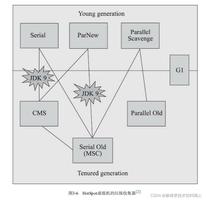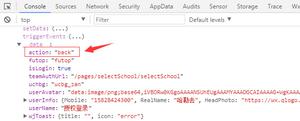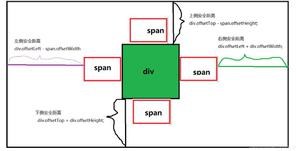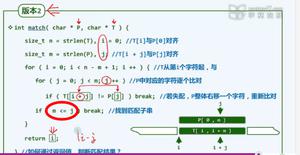JSF中的递归(c:forEach与ui:repeat)
我正在尝试通过JSF中的递归构建导航树。我将navigationNode组件定义为:
<composite:interface> <composite:attribute name="node" />
</composite:interface>
<composite:implementation>
<ul>
<ui:repeat value="#{navigationTreeBean.getChildrenForNode(cc.attrs.node)}" var="child">
<li><navigation:navigationNode node="#{child}" /></li>
</ui:repeat>
</ul>
</composite:implementation>
我的树声明为:
rootNode = new DefaultMutableTreeNode(new NodeData("Dashboard", "dashboard.xhtml"), true);DefaultMutableTreeNode configurationsNode = new DefaultMutableTreeNode(new NodeData("Configurations", "configurations.xhtml"), true);
rootNode.add(configurationsNode);
我通过以下方式调用组件:
<nav:navigationNode node="#{rootNode}" />问题是,这导致StackOverflowError。
在JSF中有一些关于构建递归的参考(例如,Facelets中的c:forEach与ui:repeat)。常见问题似乎是将构建时组件和渲染时组件/标签混合在一起。就我而言:
- 我的复合组件实际上是一个标记,在构建树时执行
- ui:repeat是实际的JSF组件,在呈现树时会对其进行评估
子组件是否在组件navigation:navigationNode之前被实际处理ui:repeat?如果是这样,它用于什么对象#{child}?它是否为null(似乎不是这样)?这里的问题是实际上创建子组件时根本不需要关心ui:repeat,因此每次创建新的子组件时,即使不一定要使用它也是如此吗?
Facelets中 的 c:forEach与ui:repeat
文章对此有一个单独的部分(递归)。建议c:forEach改用。我试过了,但是它仍然给我相同的东西StackOverflowError,但是我却无法理解。
我知道我们也可以通过扩展构建组件UIComponent,但是这种方法(用Java代码编写html)看起来很难看。我宁愿使用MVC样式/模板。但是,如果没有其他方法,我是否必须将这种递归实现为UIComponent?
回答:
JSF的内置声明性标记不适用于处理这种递归。JSF构建了一个有状态组件树,该树在请求之间持久存在。如果在后续请求中还原了视图,则视图状态可能无法反映模型中的更改。
我赞成命令式方法。我有两种选择:
- 使用该
binding属性将控件(例如某种形式的面板)绑定到提供UIComponent实例及其子级的后备bean- 您编写代码实例化,UIComponent并添加所需的任何子级。请参阅binding属性合同的规范。 - 编写自定义控制,实现一些:一
UIComponent; 一个Renderer; 标签处理程序;元数据文件(适当删除-根据您的工作以及JSF的版本和版本来执行其中的一些或全部操作)。
也许另一个选择是选择已经执行此操作的第三方控件。
如果使用的是非常有用的OmniFaces库(如果还没有,则应该使用),<o:tree>该库没有html生成,而是专门为支持此类用例而设计的。
<o:tree value="#{bean.treeModel}" var="item" varNode="node"> <o:treeNode>
<ul>
<o:treeNodeItem>
<li>
#{node.index} #{item.someProperty}
<o:treeInsertChildren />
</li>
</o:treeNodeItem>
</ul>
</o:treeNode>
</o:tree>
编辑:
这是一种模型驱动的方法,不涉及编写自定义组件或支持bean生成的组件树。这有点丑陋。
Facelets视图:
<?xml version='1.0' encoding='UTF-8' ?><!DOCTYPE html PUBLIC "-//W3C//DTD XHTML 1.0 Transitional//EN"
"http://www.w3.org/TR/xhtml1/DTD/xhtml1-transitional.dtd">
<html xmlns="http://www.w3.org/1999/xhtml"
xmlns:h="http://java.sun.com/jsf/html"
xmlns:ui="http://java.sun.com/jsf/facelets">
<h:head><title>Facelet Tree</title></h:head>
<h:body>
<ul>
<ui:repeat value="#{tree.treeNodes}" var="node">
<h:outputText rendered="#{node.firstChild}"
value="<ul>" escape="false" />
<li>
<h:outputText value="#{node.value}" />
</li>
<ui:repeat rendered="#{node.lastChild and empty node.kids}"
value="#{node.lastChildLineage}" var="ignore">
<h:outputText
value="</ul>" escape="false" />
</ui:repeat>
</ui:repeat>
</ul>
</h:body>
</html>
托管bean:
@javax.faces.bean.ManagedBean(name = "tree")@javax.faces.bean.RequestScoped
public class Tree {
private Node<String> root = new Node(null, "JSF Stuff");
@PostConstruct
public void initData() {
root.getKids().add(new Node(root, "Chapter One"));
root.getKids().add(new Node(root, "Chapter Two"));
root.getKids().add(new Node(root, "Chapter Three"));
Node<String> chapter2 = root.getKids().get(1);
chapter2.getKids().add(new Node(chapter2, "Section A"));
chapter2.getKids().add(new Node(chapter2, "Section B"));
}
public List<Node<String>> getTreeNodes() {
return walk(new ArrayList<Node<String>>(), root);
}
private List<Node<String>> walk(List<Node<String>> list, Node<String> node) {
list.add(node);
for(Node<String> kid : node.getKids()) {
walk(list, kid);
}
return list;
}
}
树节点:
public class Node<T> { private T value;
private Node<T> parent;
private LinkedList<Node<T>> kids = new LinkedList<>();
public Node(Node<T> parent, T value) {
this.parent = parent;
this.value = value;
}
public List<Node<T>> getKids() {return kids;}
public T getValue() { return value; }
public boolean getHasParent() { return parent != null; }
public boolean isFirstChild() {
return parent != null && parent.kids.peekFirst() == this;
}
public boolean isLastChild() {
return parent != null && parent.kids.peekLast() == this;
}
public List<Node> getLastChildLineage() {
Node node = this;
List<Node> lineage = new ArrayList<>();
while(node.isLastChild()) {
lineage.add(node);
node = node.parent;
}
return lineage;
}
}
输出:
* JSF Stuff o Chapter One
o Chapter Two
+ Section A
+ Section B
o Chapter Three
我仍然会硬着头皮写一个自定义的树控件。
以上是 JSF中的递归(c:forEach与ui:repeat) 的全部内容, 来源链接: utcz.com/qa/424289.html









